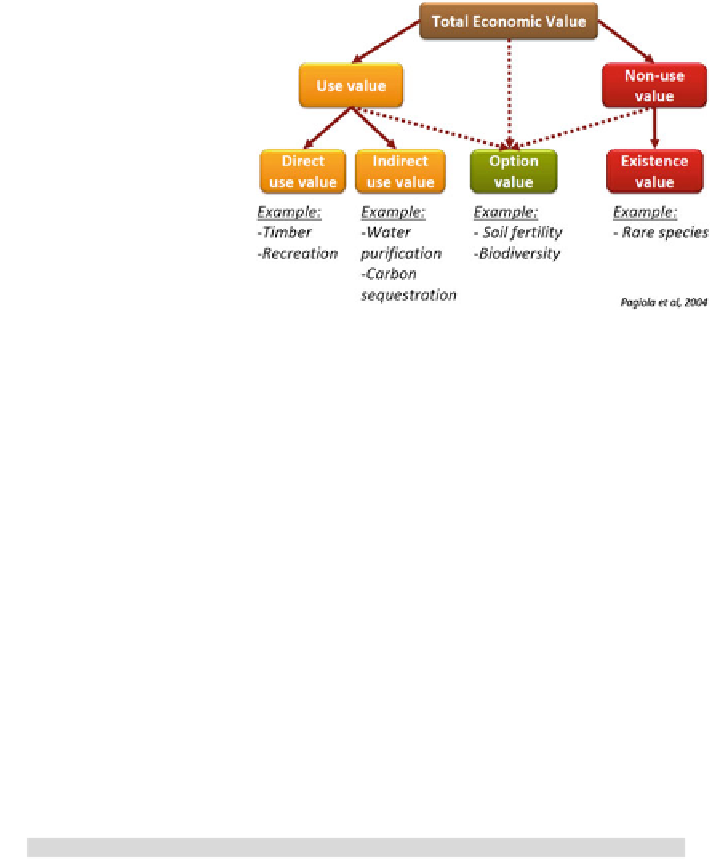Environmental Engineering Reference
In-Depth Information
Fig. 9 Components of total
economic value
relate to the services provided by nature (e.g. air and water puri
cation, erosion
prevention) (de Groot et al.
2010
). Non-use values is the importance attributed to
an aspect of the environment in addition to or irrespective of its use values and
could be described as the value attributed to its simple existence. Option value is
when an individual derives bene
t from ensuring that ecosystem services will be
available for use in the future (EFTEC
2005
).
Economic Valuation Techniques
(de Groot et al.
2010
)
A number of ways exist to translate economic and some socio-cultural values
of ESS into monetary values. Market prices (marginal values) exist for many
ecosystem services, especially the provisioning services such as timber and
non-timber forest products. Values of other services are often also expressed
through the market but in an indirect way, e.g. through (avoided) damage cost
methods (for regulating services), hedonic pricing (in
uence of environ-
mental attributes on property value) or travel cost methods for some cultural
services such as aesthetically pleasing landscapes. Other alternatives are
contingent valuation (e.g. questionnaires measuring preferences) and bene
t
transfer (i.e. using data from comparable studies).
TEV is a useful approach even if we cannot determine monetary values for all
bene
ts. Having a monetary value for some bene
t categories may be enough
justi
cation for choosing a conservation option over a more resource-exploitative
alternative. In most cases, a partial monetization is more likely, more feasible and
quite possibly less risky. By less risky, we mean that any analysis must be credible
if stakeholders are to accept its
findings (TEEB
2010a
; Fig.
10
).




Search WWH ::

Custom Search